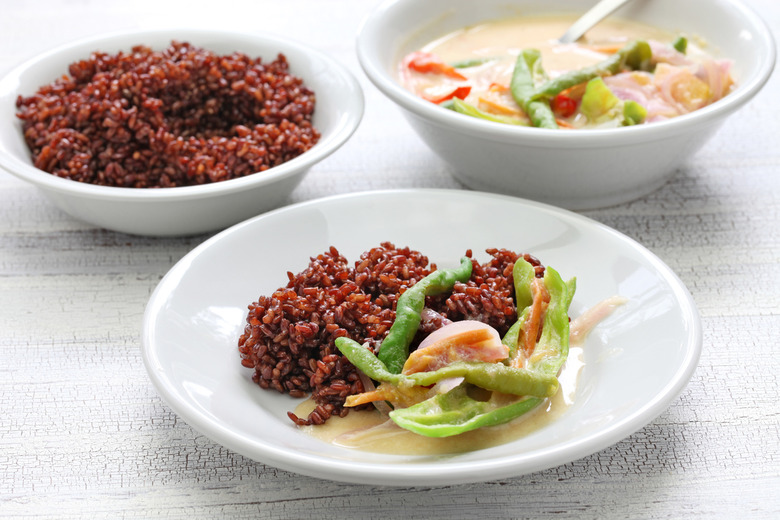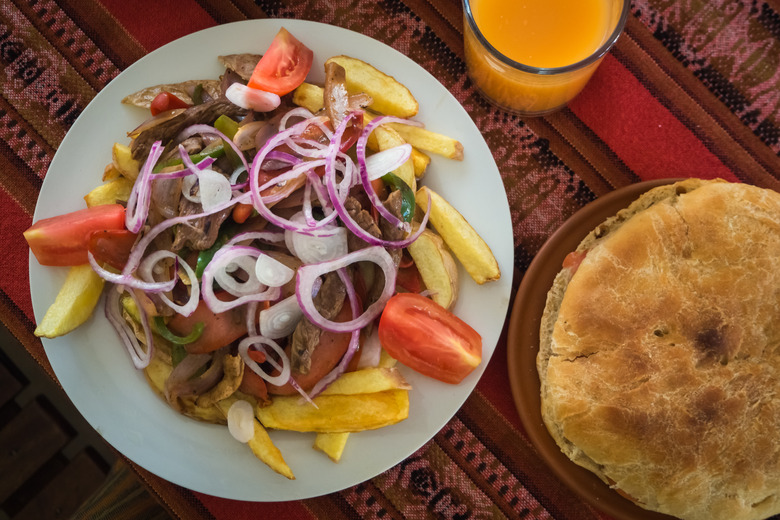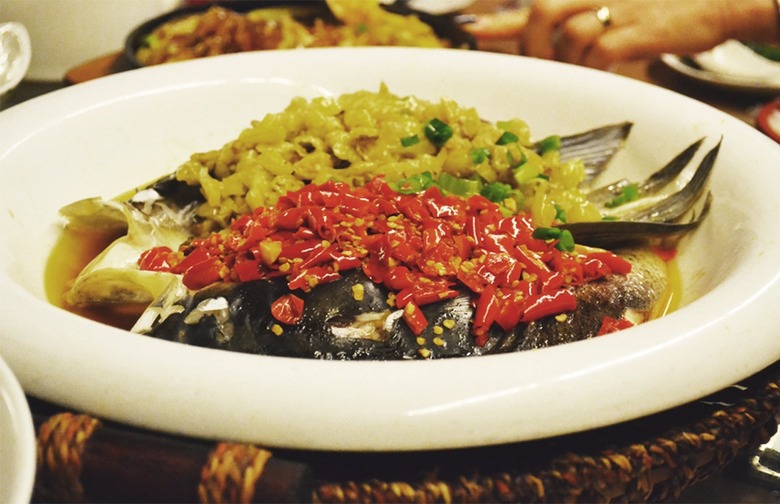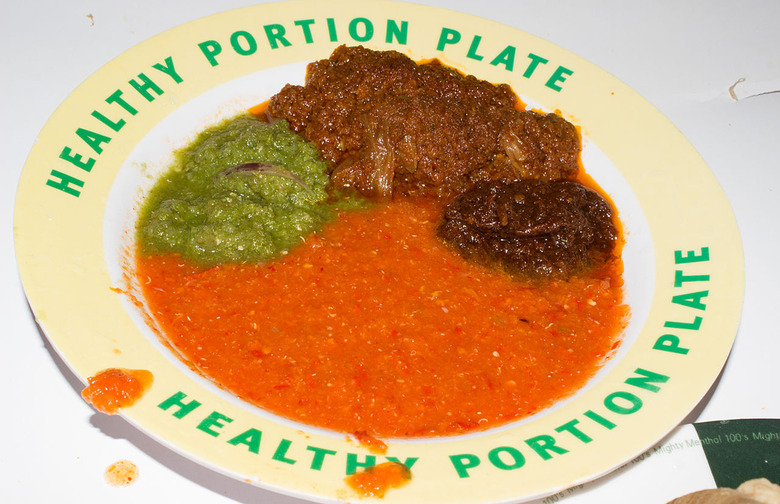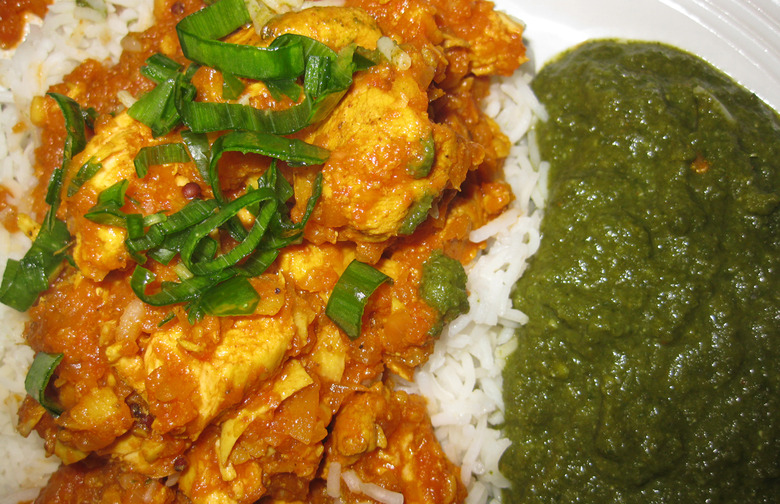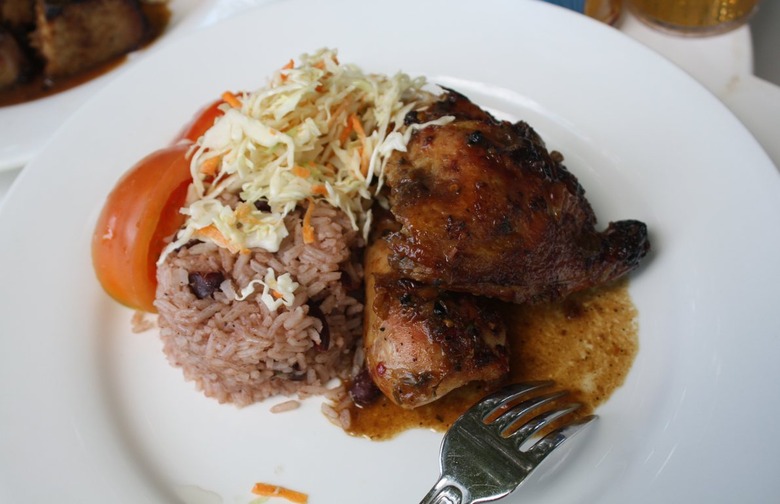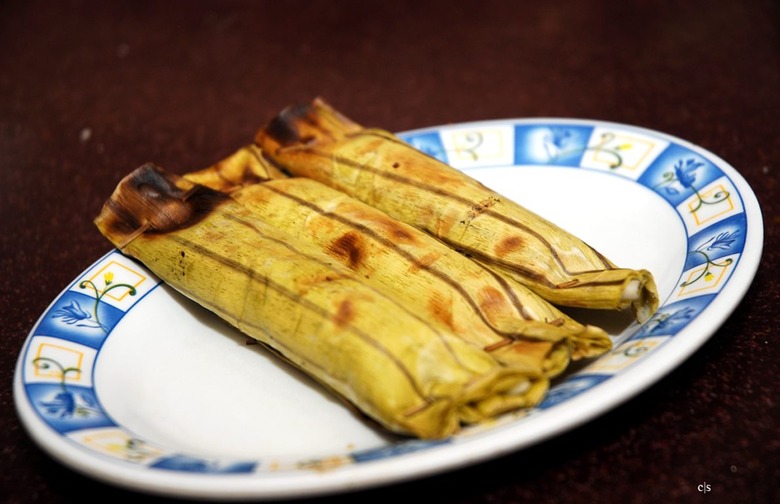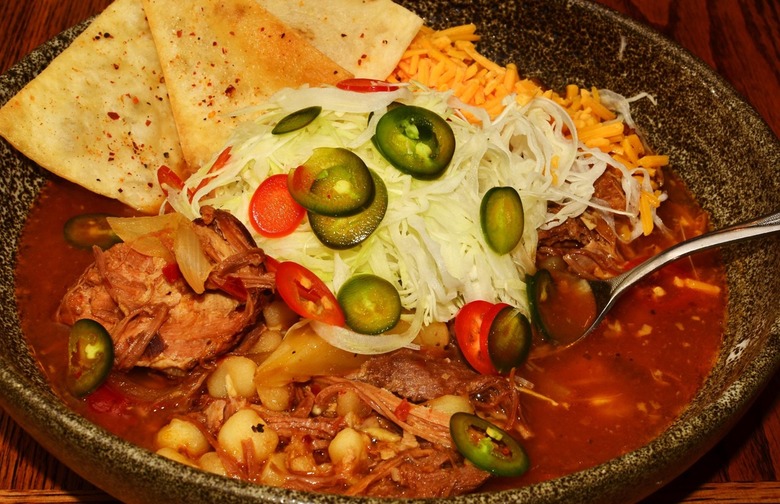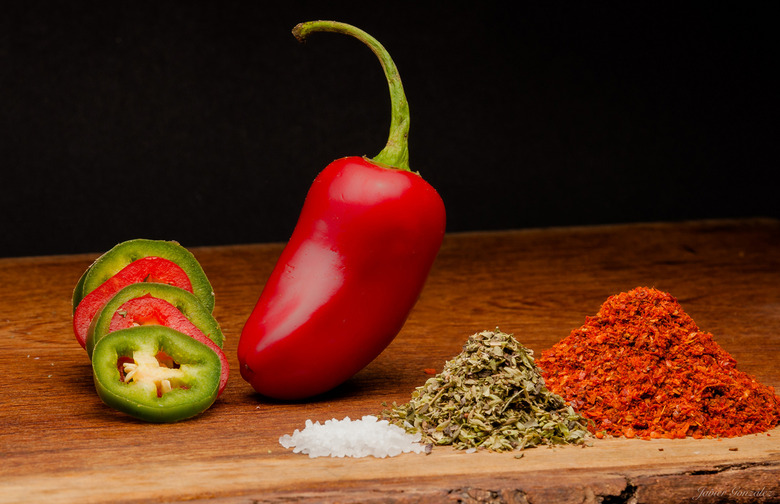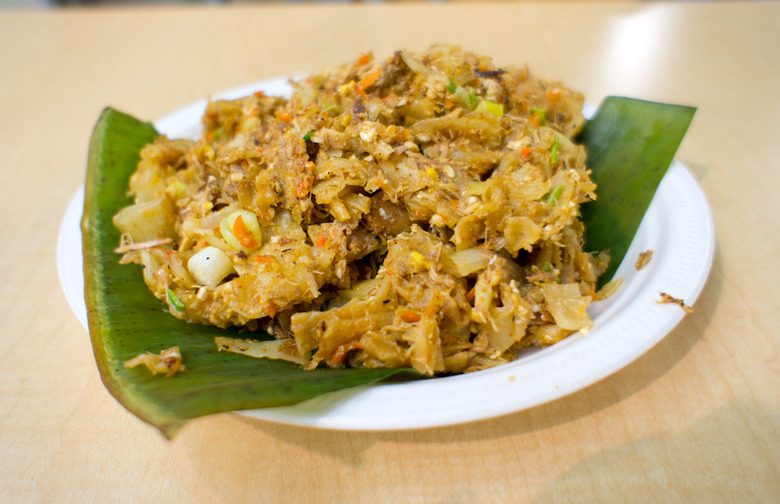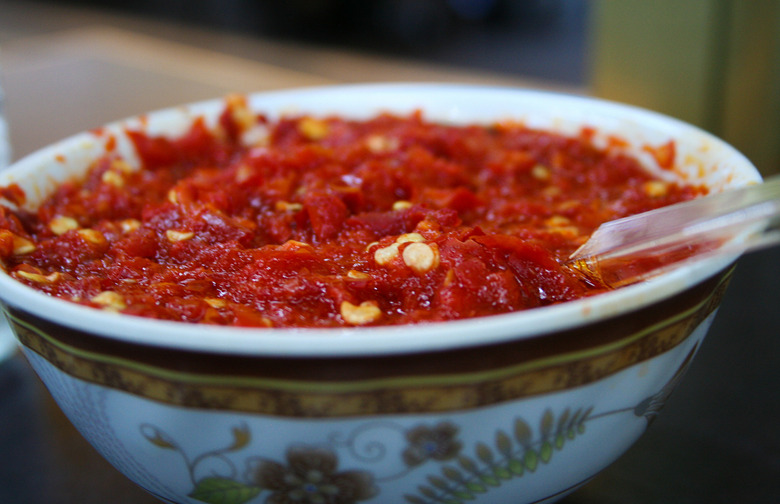15 Best Countries For Spicy Food Lovers Slideshow
In 2001, Dr. Paul Bosland and his team at New Mexico State University discovered the bhut jolokia pepper, also known as the ghost pepper, in India. It's considered the hottest pepper in the world. Why is it called the ghost pepper? Bosland said, "I think it's because the chile is so hot, you give up the ghost when you eat it!"
Whether you're the type of seasoned spice-adventurer that seeks out the ghost pepper or you just enjoy a little kick to your food, we have the list for you. You'll notice that many countries that love spicy food have warmer climates. According to research conducted at Cornell University, one reason for this is that spicy food helps fight off food-spoilage microorganisms and foodborne bacteria. In warmer climates, especially before refrigeration, foodborne bacteria were far more likely to thrive than in cooler climates. Another reason: Counterintuitively, eating spicy foods cools your body down, or at least makes it feel cooler; spice induces sweating, and as the sweat evaporates, your skin cools. It doesn't hurt that chiles are an endorphin-boosting aphrodisiac, either.
To compile this list of some of the spiciest countries around the globe, we consulted our previous list of the world's spiciest dishes that are worth the heartburn, checked out existing lists of the spiciest cuisines around the world, and researched international dishes where chiles are a key ingredient.
Here are 15 of the world's spiciest countries, along with which dishes to seek out once you get there.
Additional reporting by Nikkitha Bakshani.
Bhutan
The food in Bhutan, a small kingdom bordered by India and Tibet, is so spicy that the national dish, ema datshi, consists solely of chiles and cheese; it is usually served with rice. According to the BBC, chiles in Bhutan are considered vegetables, rather than flavor enhancers. A good place to try the hot, spicy, and cheesy ema datshi is Plums Café in Thimphu.
Bolivia
Different regions of Bolivia have spicier local cuisines than others, with the high-altitude Altiplano region enhancing cuisine with a variety of spices. In the Andean region of Bolivia, salteñas, close cousins of empanadas, are made with spicy sauce. Tucumanas, a type of pastry, have different filling options, including meat, vegetables, and spicy sauce. Pique a lo Macho denotes a plate piled high with beef, sausage, onions, boiled egg, and locotos (spicy peppers), while papas rellenas are fried and stuffed mashed potato balls made with an oft-spicy flour batter.
China
Spicy food is not ubiquitously beloved across the vast regions of China, but in the provinces of Hunan, Sichuan, Yunnan, and Guizhou, you'd better be prepared for some of the fieriest foods in the world. Steel yourself for steamed fish heads covered in a blanket of diced chile peppers, scallions, and garlic; or Sichuan huo guo, a tongue-numbing variation of hot pot in which Sichuan chiles, also known as "flower peppers" or "prickly ash," fare prominently. If you want a preview in the United States, head to Han Dynasty in New York City and order their dan dan noodles.
Ethiopia
Ethiopian wats, or stews, can vary in spice, but most of them are quite hot. Sik sik wat consists of cubed pieces of beef stewed with fenugreek, ginger, cloves, allspice, and nutmeg along with wine and a tomato purée. The heat comes from the black pepper and berbere, an Ethiopian spice mixture including dried red and long chiles — the result is tear-inducing staple of many Ethiopian dishes. Addis Eats, a local food tour company, highly recommends Kategna, which has three locations in Addis Ababa.
Ghana
Ghana, like many West African countries, has a cuisine highlighting spicy stews and condiments. Shito is the star of the show here when it comes to spice; however, the hot paste usually consists of ground black pepper, anise pepper, and palm oil. This ingredient is used in many Ghanaian dishes, like peanut soup, shrimp pepper soup, and goat pepper soup. If you're at a restaurant, ask for "pima," and a container of extremely spicy sauce will probably follow.
India
It's no surprise India is on this list. Spicy food is so popular in India that the word mirch, which means "chile spice," is often used in advertising campaigns to denote something appealing and exciting. Vindaloo is the spicy Goanese curry most people think of when they think of spicy Indian food, but Rajasthani laal maas turns up the heat just as much, and there's a reason for it: It is traditionally eaten with game meat, and the spiciness is meant to mask the gamey taste. If you're in South India, you'll want to try chicken 65, a Chennai favorite; nobody can pinpoint why it is attached to the number "65," but one theory is that it needs to be cooked with exactly 65 hot chile peppers in order for it to get its flavor. Another irresistibly spicy dish is chile bajji (chiles deep fried in chickpea flour), which you can find at any beach along the South Indian coast.
Jamaica
Sweetish yet blistering Scotch bonnet peppers are responsible for the heat in many Caribbean dishes, including the ever-popular jerk chicken. One of Jamaica's spiciest dishes is Jamaican curry goat. Everyone has a different way of making it, but almost every version is incredibly spicy; blame it on the dainty-sounding Scotch bonnets. Luckily, the potatoes, rice, and coconut milk usually served alongside the dish gives your tongue a little relief. If you want authentic jerk-spiced meat, cooked on wood, in which chile peppers are the star, go to Scotchies in Montego Bay.
Korea
No Korean meal is complete without some spicy kimchi or gochujang hot paste on the side. Tteokbokki (rice cakes in chile sauce) pack a punch, but there is some delightful sweetness somewhere in there that provides a very welcome contrast. One of the spiciest dishes you'll taste in Korea is buldak, which translates to "fire chicken." Seoul, especially the Hongdae area, which is known for its abundance of university kids, has no shortage of buldak shops.
Malaysia
Southeast Asians love their spicy foods, such as otak-otak, a fish cake made from a mixture of fish paste, chiles, garlic, shallots, turmeric, lemongrass, and coconut milk. While they are popular throughout this part of the continent, Malaysian otak-otak turns up the spice by adding chile peppers into the mix. Laksa is a popular Peranakan (Chinese-Malaysian fusion) noodle soup that is very generous in its use of sambal chile. For the best and most authentic spicy Malaysian food, visit the Madras Lane Food Stalls in Kuala Lumpur.
Mexico
Chiles are a basic ingredient in most Mexican foods. Chile powder is even sprinkled on top of fruits, like mangos and pineapples, along with salt and lime juice. In most Mexican dishes, the type of chile used gives each specialty its primary flavor, be it habanero, ancho, poblano, serrano, or one of many others. Pick your poison when you order pozole, a hominy-based stew that employs green or red chiles and offers varying degrees of spice. One of the most popular Mexico City spots for this dish is Pozole Casa Licha.
Peru
If you've been to Peru, you probably know about the deep and unique flavors combined in most of the country's iconic dishes. You also probably know about aji pepper —a basic ingredient used to give many dishes that extra spicy kick. Aji de Gallina is a popular Peruvian stew for cold winter days made with chicken and spices, and Lomo Saltado is an Asian-Peruvian fusion dish consisting of stir-fried beef, tomatoes, red onions, and aji amarillo (yellow chiles).
Sri Lanka
India gets all the attention when it comes to spicy food, but food in this little island under the Indian subcontinent has a whole lot of fire. Kottu, which is sort of like a fried rice that uses shredded roti instead of rice — an ingenious idea — is served with a very spicy curry sauce that can be used as a dip or poured over the dish. On its own, it's spicy enough that the sauce seems like it is daring you to turn up the heat, and spicy food lovers like yourselves most certainly will. If you can't get to the street food vendors in Colombo anytime soon, try Sigiri in New York — and order one level lower than you think you can handle.
Thailand
There are ways to circumvent spicy food at Thai restaurants in the U.S., but it is a lot harder to do so in Thailand. Take intense dishes like nuea phat phrik — beef fried with chiles and herbs — or phat phrik khing, which is a bright red curry that gets its vibrancy from phrik chile peppers and galang, a spicy, ginger-like root. Though many will say extremely spicy Thai food is not real Thai food, and that spice is just another flavor, the fact is that the Thai threshold for spice is a lot higher than the non-Thai threshold. In other words, the country's entire cuisine is very spicy — especially in the northeastern Thai region of Isaan. You'd be hard-pressed to find a non-spicy dish at Baan Khanitha in Bangkok.
Tunisia
Harissa — a compote of hot dried chile peppers, cumin, olive oil, and garlic — is at the forefront of most Tunisian meals. It's often used as a dip for bread or an ingredient in classic dishes. Versions range from mild to very hot. The country's version of couscous, which is traditionally served as part of Sunday dinner, often includes harissa. Another spicy favorite is ojja, which is commonly found on the menu at fast food restaurants in Tunisia. Ingredients include meats, harissa, olive oil, garlic, peppers, and tomatoes. Ojja Merguez includes spicy sausage as the meat.
United States
While a lot of American food is free of hot spice, many Americans do love spicy food, and that is evident in one of the most popular American foods around: Buffalo wings. Many joints refer to their spiciest wing sauce as "suicide sauce." The best Buffalo wings in America? Duff's Famous Wings, which has various locations in New York and Canada, and one in Texas. Although Buffalo wings are from upstate New York, you will certainly find more spicy food in the South than you will in the north, especially in Louisiana, where Tabasco is headquartered. Shrimp Creole, which is packed with spice from green peppers, red peppers, and cayenne, is one of many Southern dishes that will make you sweat. Real Texas chile con carne (no beans!) is another.

